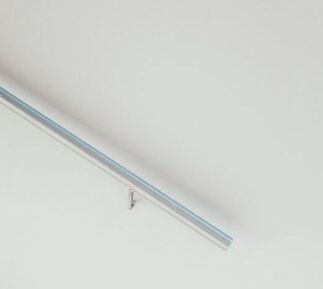|
Strength training is used more today to round out exercise regimes, especially for the “Baby Boomer” population. This addition compliments the previous focus on cardiovascular fitness programs. Evidence shows that strength training is not only good for activities of daily living, but also improves balance and helps with weight management and memory. Muscle strength involves coordination of nerve messages getting to the individual muscle fibers, which requires chemical messengers called neurotransmitters to link muscle and nerve function. Weight/strength training stimulates the production of these neurotransmitters, which also may boost memory.
Some of my patients are taking responsibility to keep themselves fit with a daily exercise routine but find that they are injuring themselves with the same routine they have done for years. Upon questioning, we find individuals are doing weight lifting of only certain muscles around a particular joint, usually the areas of the body that are easily seen. In doing so, imbalances can develop. Some people try to progress with their programs quicker than their bodies can handle. Some start off at too heavy a load and try to push through the exercise despite what their body says. Others do techniques or exercises with a higher risk for injury. Still others take statin drugs to lower their cholesterol but are not taking Co-Q 10 which gets depleted when taking statin drugs, thus reducing the body’s ability to produce muscle energy. Plus, add in the aging factor where muscle mass and strength decrease with each decade of life. Most people who do weight training know that exercise is done gradually and every other day to allow for the muscle fibers to build with a day of rest between workouts. It is important to understand the different types of workout routines depending on your goals, whether to tone, bulk, increase strength or increase stamina. Muscles are made up of different types of fibers; some are better suited for strong bursts of energy and others better suited for endurance activities. People have different ratios of each of these fibers, so that is why some people are better at long distance running and others are better at sprints. Nutrition can make a difference in how muscle performs. Many books have been written on the subject, specific for various types of athletic events. For the majority of us who just want to stay standing and functional for as long as we can as we age, there are simpler guidelines to follow, but it may help to get some guidance with an exercise program if you feel you are straining, plateauing or have gotten into a rut. Changing a routine may enhance brain function and muscle efficiency and get you to a new level with less risk for injury.
0 Comments
I remember a story about a Peace Corps worker who tried to teach soil conservation to a group of nomadic farmers. They were not interested in the subject until he got them to believe that there is a limited amount of land. They believed that land was limitless and all they had to do was keep moving to new fertile land. It wasn’t until their understanding of the whole world shifted that they began to embrace the practice of soil conservation.
A significant portion of our national budget goes to pay for healthcare. With the focus of our government in reducing expenditures to reduce the national debt, it is expected that there will be reductions in government spending on healthcare. Many Baby Boomers are entering the age when they will start using Medicare and this is a concern. Articles show that jobs are increasing at a rate of 25% in the healthcare market, but some feel this is not necessarily a good indicator since the goal is to reduce healthcare spending. More and more effort is being placed on providers to become more efficient in delivery of healthcare services, especially in light of the fact that the United States ranks 37 in quality of health care of the industrialized nations despite being number 1 in healthcare costs. Perhaps, more attention and money should be spent on expanding prevention and wellness programs since most of the effort is now aimed at extending insurance coverage and decreasing the growth of costs through improved efficiency. There is even a movement to decrease or eliminate tests that show limited efficacy. Some movies/books are showing impressive results in reducing heart disease, diabetes and arthritis with changes in diet, exercise, stress reduction, improved sleep and attitude. Another strategy is to have each individual take responsibility for improving health one step at a time. Anything is better than nothing and making changes in your routine can be done systematically and easily. Start walking a little more; park the car just a little farther; stand and do a little exercise while watching TV; eat a few bites less with each meal; drink a little more water; drink less soda; laugh a little more; go to bed a little earlier; talk to your friends and watch a little less TV. You can do a lot of little things on a daily basis to improve the quality of your life. Wouldn’t you rather be a little healthier with better blood flow to your brain, possessing stronger muscles with more flexibility, while looking and feeling a little younger? You have a choice and you are in charge of your life. It’s been about 2 years since I last tried to read Jared Diamond’s book, Collapse. He wrote a Pulitzer Prize winning book, Guns, Germs and Steel, which discussed how some civilizations rose to high technical advances and others remained at a Stone Age level. I had zipped through this book, finding it read like an Indiana Jones adventure. Collapse, on the other hand, discussed the demise of many advanced civilizations, which I found disheartening and stopped reading about two-thirds of the way through. Nevertheless, I recently picked it up and read it again. To my surprise, I am getting inspired.
This book is filled with examples of wrong decisions and how these decisions led to unsustainable living conditions. I started thinking about modern life and how we sometimes do things that don’t make any sense and yet we still do them. Here are some examples from the book: There is a theory that Easter Island, with the big stone tiki-head statues, became desolate when all the trees were cut down. Who would do such a non-survival thing like that? What would possess some group to do that? Here is another example: 60% of Australia’s land area and 80% of the human water use is dedicated to agriculture, but the value of agriculture relative to other sectors of the Australian economy contributes less than 3% of the gross national product. Of that agricultural land, 99% makes little to no positive contribution to the economy, which is possible with the help of indirect government subsidies. It would almost make more sense for Australia to put its efforts into other sectors for growth. One more example: A cows’ digestion produces methane gas twenty times more potent than carbon dioxide emissions from cars in causing global warming. The author suggests that it may be more effective to reduce greenhouse gas emissions by decreasing cattle production. What does all this have to do with keeping fit? Perhaps, if we can decode why groups of people make non-survival decisions that wipe out whole civilizations, then maybe we can find the answers to why individuals make non-survival decisions that impact the quality and longevity of their lives. How do you shift the whole nation’s idea that obesity is a train wreck waiting to happen on an individual, community, economic and future level? How many people do you know who are actively changing their lifestyles to make a dent into this problem? How many people do you know who think of this as a global problem that has far-reaching implications?  Photo by Bernard Hermant on Unsplash Photo by Bernard Hermant on Unsplash Make these changes to your home to make tasks easier and safer. Add Support to the Bathroom and Shower:
Remove Obstacles:
Yonemoto Physical Therapy published a newsletter “The Aches and Pains of Aging” that can be found in the newsletter archives. Aging can present itself in different ways and have many different symptoms. There are ways to help prevent the effects of aging by changing how you view life, change your lifestyle, incorporate exercise for the body and mind.
Learn more about aging and solutions by reading “The Aches and Pains of Aging” which covers:
|
Sheila’s BlogI focus on the topics you care about most. Categories
All
Archives
February 2022
|
|
55 S. Raymond Ave. Suite 100
Alhambra, CA 91801 Main Phone: (626) 576-0591 Alternate Phone: (626) 538-3966 Fax: (626) 576-5890 Email: yonemotoptfinance@gmail.com |
© 2015 Yonemoto Physical Therapy. ALL RIGHTS RESERVED.
|


 RSS Feed
RSS Feed